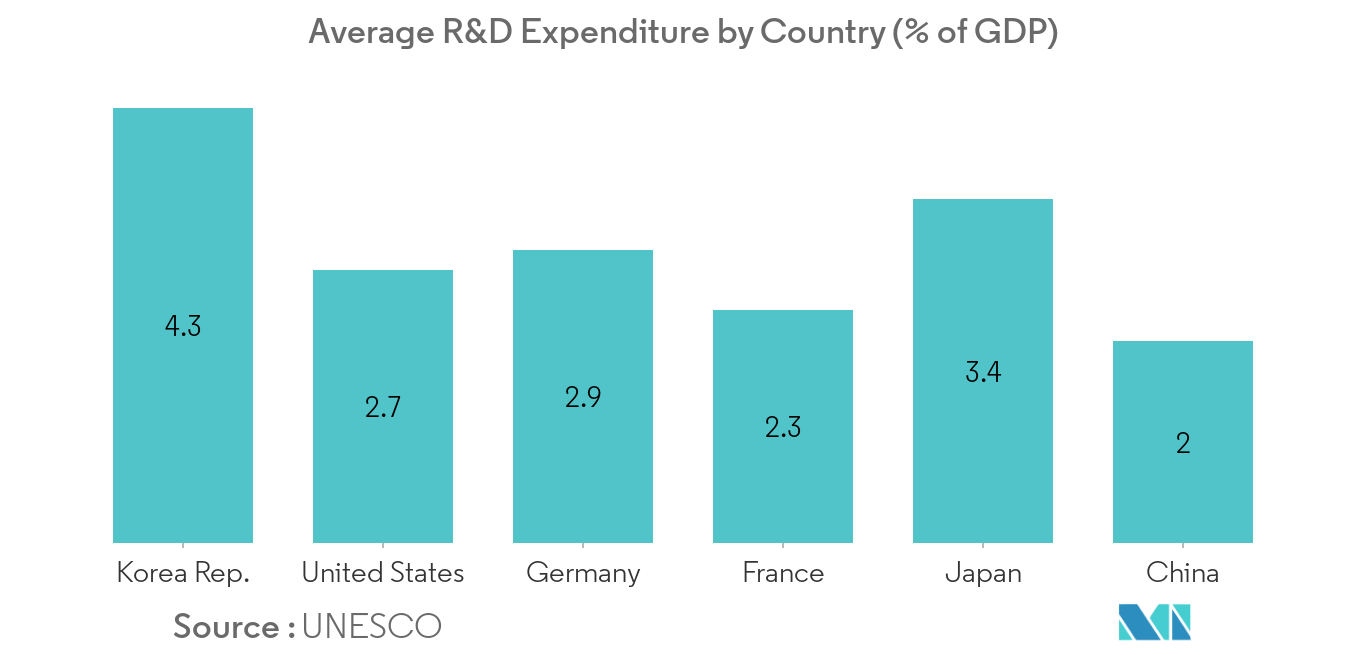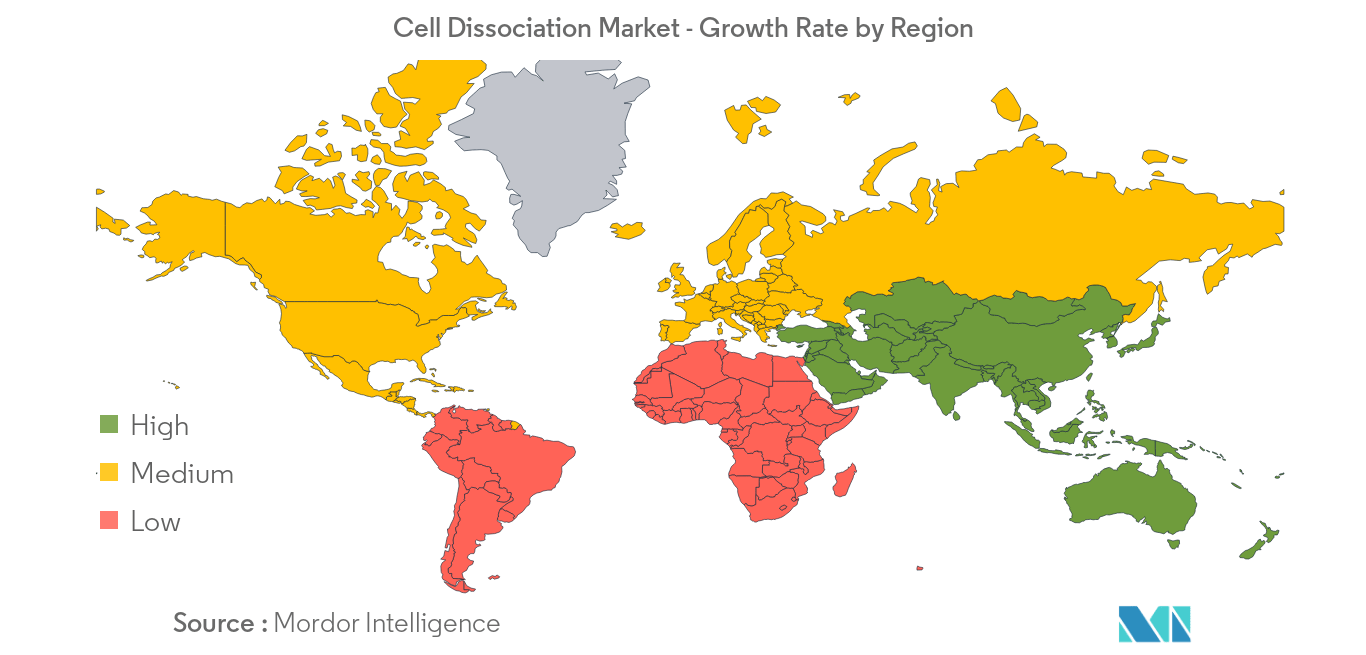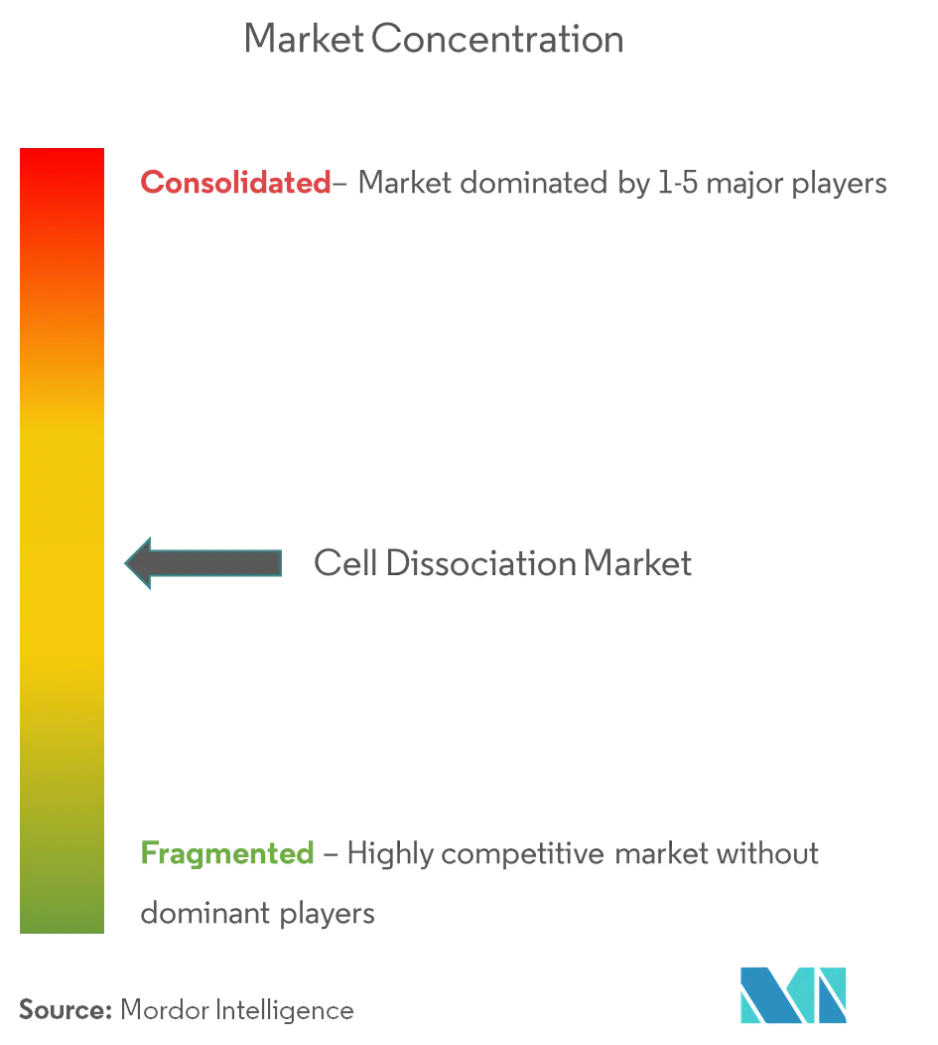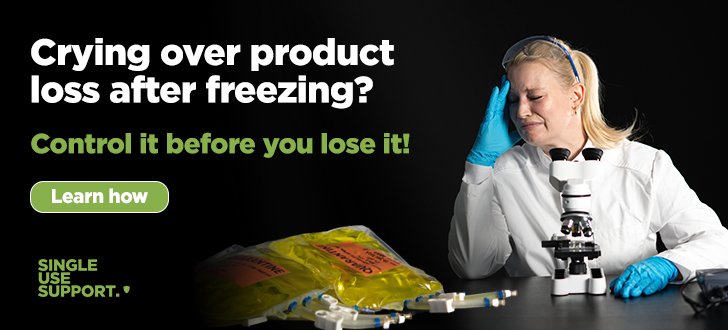Cell Dissociation Industry Overview
24 January 2023 | Tuesday | News

Cell Dissociation Market Analysis
The total worldwide R&D spending of pharmaceutical and biotechnology companies increased from USD 108 billion in 2006 to USD 141 billion in 2015. Investments in R&D activities may continue to increase but at half the former pace. As per the report from India Brand Equity Foundation, it is expected that R&D expenses will reach USD 160 billion in 2020.
The biopharmaceutical industry is a rapidly developing sector within the pharmaceutical industry, with enormous opportunities and implications for healthcare. Opportunities in biopharmaceuticals have been increasing over the past decade, as a result of great effectiveness and the safety of these drugs. Biopharmaceuticals offer several benefits, such as highly effective and potent action, fewer side effects, and the potential to actually cure the diseases rather than merely treat the symptoms, which have significantly increased the demand for biopharmaceutical products.
Cell Dissociation Industry Segments
Cell dissociation refers to the act of separating adherent cell monolayers into single-cell suspensions. The cell dissociation process finds tremendous application in regenerative medicine and stem cell research. The cell dissociation products are either enzyme-based or are non-enzymatic buffers.
| By Product | |
| Enzymatic Dissociation Products | |
| Non-enzymatic Dissociation Products | |
| Instruments and Accessories |
| By Tissue | |
| Connective Tissue | |
| Epithelial Tissue | |
| Other Tissues |
| By End User | |
| Pharmaceutical and Biotechnology Companies | |
| Research and Academic Institutes | |
| Other End Users |
| Geography | ||||||||
|
||||||||
|
||||||||
|
||||||||
|
||||||||
|
Report scope can be customized per your requirements. Click here.
Cell Dissociation Market Trends
This section covers the major market trends shaping the Cell Dissociation Market according to our research experts:
Enzymatic Dissociation Products Segment is Expected to Witness a Healthy Growth
Cell and tissue dissociation, primary cell isolation, and harvesting of single cells are the principal applications for enzymes in stem cell research and cell biology studies. The use of enzymes for cell dissociation purposes is widespread. The goal of any dissociation procedure is to maximize the yield of functionally viable dissociated cells. The outcome of any dissociation procedure is dependent on (but not limited to) the type of tissue, age of animal/human, dissociation medium used, an enzyme used, enzyme concentration, temperature, and genetic modifications.
Consequently, a number of enzymes are used in research activities for various purposes. The most prominently used enzymatic dissociation products, in decreasing order of usage frequency, include trypsin, collagenase, elastase, and hyaluronidase, among others.

United States to Hold Significant Share of the Market
Sustained growth in pharmaceutical and biotechnology industries, increasing incidences of cancers and other chronic diseases, and a strong trend of R&D investments in life sciences by both industry and academia are the primary factors driving the growth of the market. In the United States, for the fiscal year 2016, USD 520 million was granted by the federal government for National Cancer Institute (NCI) budget, for breast cancer research, USD 800 million for clinical trials, USD 212 million for colorectal cancer research, USD 241 million for leukemia, and another cumulative amount in excess of USD 1 billion for research in other cancer types.
Additionally, the estimates available in the National Institute of Health portal for stem cell-based research indicate a cumulative funding budget of more than USD 3 billion for research in various fields of stem cell applications. Added to that, the presence of a large number of chemicals and chemical analysis providers in the United States, who are adept in supplying both enzymatic products and non-enzymatic products for cell dissociation, is further expected to drive the growth of the US cell dissociation market.

Cell Dissociation Market Competitor Analysis
The market studied is moderately competitive and several local, as well as international players, are posing intense competition across various geographies. Most of the key players of this market are having a good presence in the North America and Europe region. Germany, France, and Italy are some of the European countries where biotechnology companies are trying to establish their R&D plants. Similarly, the United States is a country where all the companies are generating large revenue due to the high adoption of the technologies and increasing use of cell dissociation.
Cell Dissociation Market Top Players
-
F. Hoffmann-La Roche Ltd.
-
Merck KGaA
-
Thermo Fisher Scientific
-
GE Healthcare
-
Becton, Dickinson and Company
*Disclaimer: Major Players sorted in no particular order

Most Read
- Management of Relapsed/Refractory Multiple Myeloma
- 2025 Drug Approvals, Decoded: What Every Biopharma Leader Needs to Know
- BioPharma Manufacturing Resilience: Lessons From Capacity Expansion and Supply Chain Resets from 2025
- APAC Biopharma Review 2025: Innovation, Investment, and Influence on the Global Stage
- Top 25 Biotech Innovations Redefining Health And Planet In 2025
- How Health Systems Are Reshaping Drug Adoption, Partner Models, and Market Access in 2026
- The New AI Gold Rush: Western Pharma’s Billion-Dollar Bet on Chinese Biotech
- Single-Use Systems Are Rewiring Biopharma Manufacturing
- The State of Biotech and Life Science Jobs in Asia Pacific – 2025
- Asia-Pacific Leads the Charge: Latest Global BioSupplier Technologies of 2025
- Invisible Threats, Visible Risks: How the Nitrosamine Crisis Reshaped Asia’s Pharmaceutical Quality Landscape
Bio Jobs
- The State of Biotech and Life Science Jobs in Asia Pacific – 2025
- Avantor’s New CEO Ligner Aims to Unlock Global Potential and Deliver Shareholder Value
- AstraZeneca Commits $50 Billion to U.S. Expansion by 2030 in Biggest-Ever Global Investment
- Thermo Fisher, SAMRC, and South Africa’s Department of Science and Innovation Launch CATIR to Nurture Next-Gen Scientists
- Cube Biotech Appoints Former Sartorius CEO Dr. Joachim Kreuzburg to Board of Directors
- FDA’s AI Transition Marks a Turning Point in Drug Review: Industry Faces Pressure to Adapt Amid 20% Workforce Cut
- WuXi XDC Completes Mechanical Build of Singapore Bioconjugate Manufacturing Hub
News
Editor Picks











